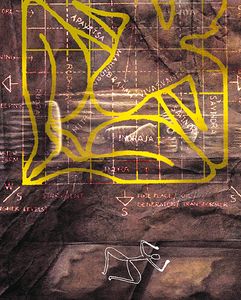Ever since the Kochi-Muziris Biennale was conceptualised, I have become a part-resident of Kochi. However, despite the success of the biennale, the state of the city is worrisome.
On the roads, one can see garbage piling up on the sides. During the monsoon, the roads become unusable. As the city expands, not enough is done to seek better ways to accommodate its citizens. Last month, there was a conference in Shanghai, and the spokesperson for the Communist Party of China said they had started working on the city project towards the 22nd century, and its first part would be ready by 2025. This is the scale of their planning!
It’s not just about urban planning, but also about involving architects and artists so that aesthetics is attended to. In Kerala, we should look for eco-friendly materials and try to avoid steel and glass as much as possible. Heritage buildings in and around Fort Kochi and Mattancherry should be protected and not allowed to fall prey to the real estate market. This can be done by bringing in regulations that restrict demolitions and building new structures, and even if a new structure is allowed, the height and look of the building can be defined.
Too many smart city visions concentrate on big data and connectivity while there are many more fundamental problems. I’ve heard that Jakarta and Beijing are both exploring data dashboards and citywide sensing projects to address issues of traffic congestion. What these cities really need are improved public transport systems. Similarly, Kochi has a world-class metro rail network now, but it needs to be seen how far it has gone in solving people’s transportation needs.
As mentioned, Kochi has a huge waste management problem which needs to be addressed with express efficiency. The once-beautiful canals in the Fort Kochi region have become drainage and waste-dumping systems. Worse, it is on the sides of these dirty canals that a good portion of the population lives. Another issue is the water supply to houses. People are now seeking refuge in cans of supposedly purified water because they don’t have a proper drinking water supply. Planning for the future must create open, green spaces and playgrounds because Kochi is not just for us but for our children and their children, too.
For these problems to be addressed, two things must happen simultaneously.
One is a strong and visionary leadership. This should come from the public sector. Some of the standout smart cities—Barcelona, Amsterdam, Malmö—exhibited dynamic leadership from their mayors as well as chief executives. Crucially, they did not leave the evolution of the city to the market. In parts of Africa and Asia, smart cities are almost purely private sector-driven. As a result, we are seeing elaborate hi-tech satellite cities gathering dust.
Second, many smart city projects fail in communicating their goals and in capturing the imagination of people so they can be bothered to participate. Here, the aesthetic and cultural dimension is crucial because that will help connect to people. This must be part of the conversation apart from political will.
editor@theweek.in


